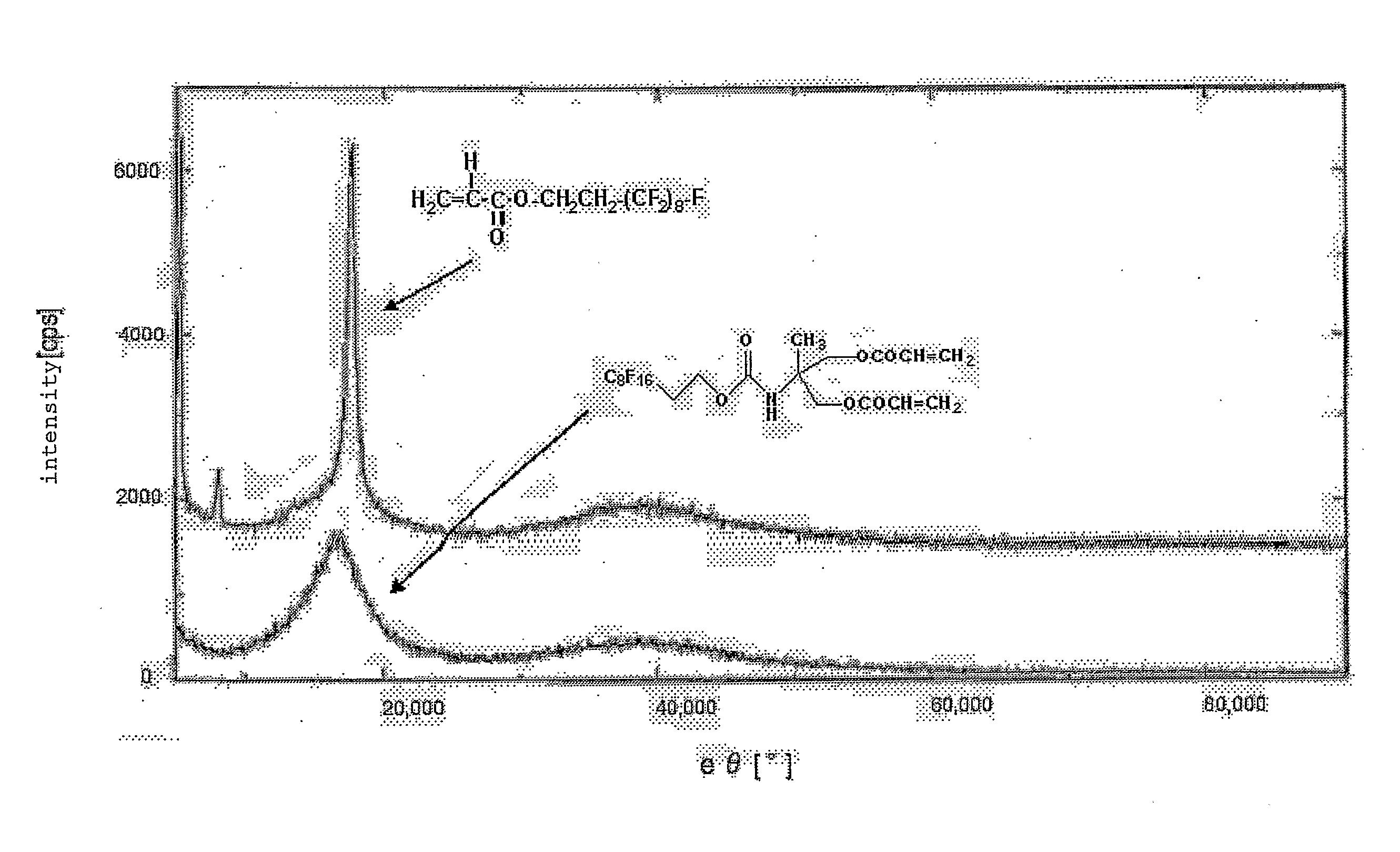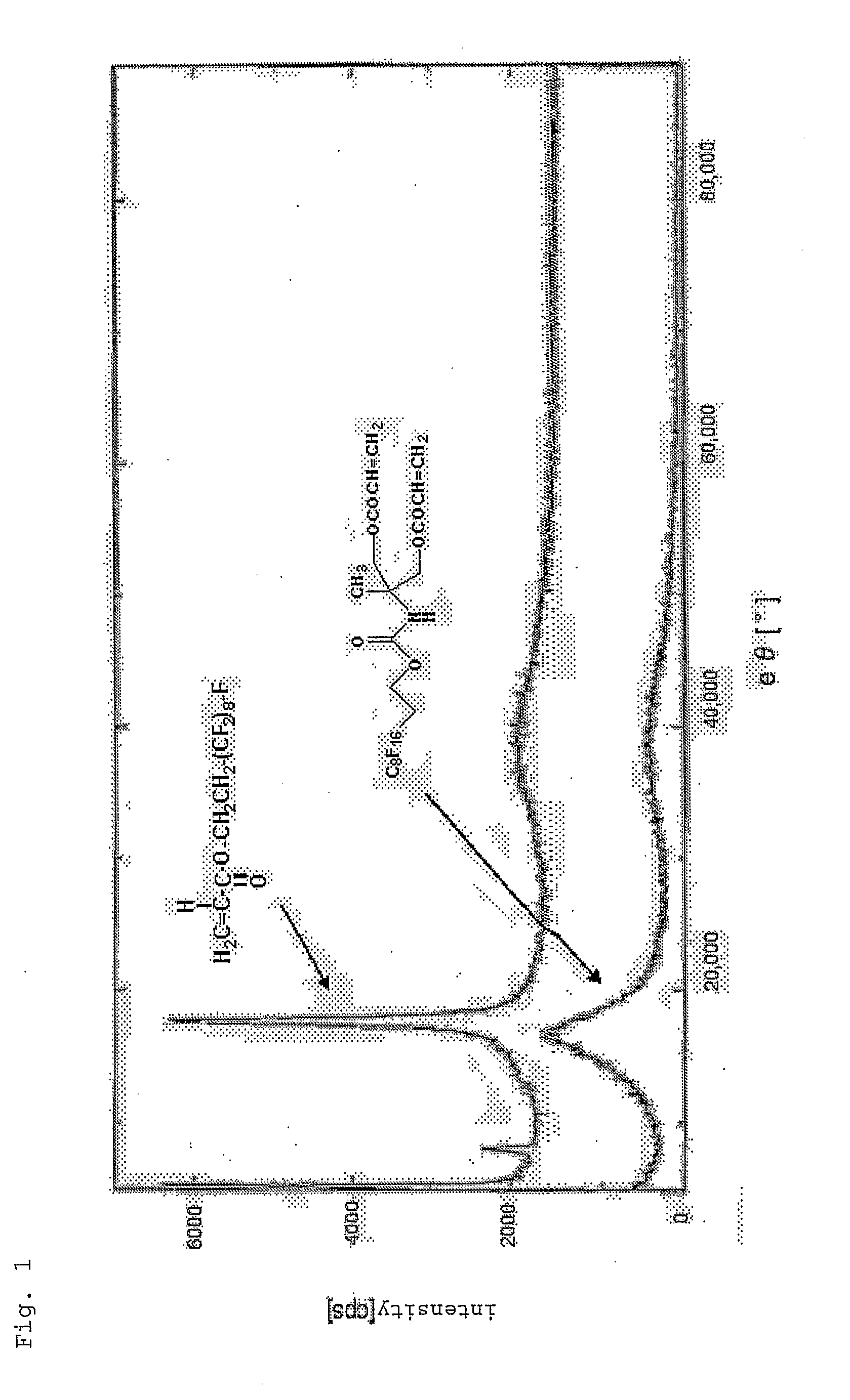Ethylenically Unsaturated Group-Containing Isocyanate Compound and Process for Producing the Same, and Reactive Monomer, Reactive (Meth) Acrylate Polymer and its Use
a technology of isocyanate compound and unsaturated group, which is applied in the field of new isocyanate compound, can solve the problems of high labor intensity, low reaction yield, and impurities of phosphorus and sulfur, and achieves excellent curability, easy to clean, and easy to clean
- Summary
- Abstract
- Description
- Claims
- Application Information
AI Technical Summary
Benefits of technology
Problems solved by technology
Method used
Image
Examples
example 1
First Step
[0383]2-Amino-1,3-propanediol (20.0 g, 0.22 mol) and 200 ml of toluene were charged into a 500-ml four-necked flask equipped with a stirrer, a thermometer, a dropping funnel, and a reflux condenser under a nitrogen atmosphere. The contents of the flask were heated to 50° C., and 2-amino-1,3-propanediol was dissolved, and hydrogen chloride gas was fed into the flask at a flow rate of 100 ml / min over a period of one hr.
Second Step
[0384]The solution prepared in the first step was heated to 90° C. 3-Chloropropionic acid chloride (62.6 g, 0.49 mol) was fed to the solution over a period of 1.5 hr, and heating was continued at 90° C. for additional one hr.
Third Step
[0385]Carbonyl chloride (47.5 g, 0.48 mol) was fed to the solution prepared in the second step over a period of 4 hr while maintaining the temperature of the solution at 90° C., and heating was continued at 90° C. for additional one hr. Thereafter, carbonyl chloride remaining dissolved in the reaction solution was remo...
example 2
First Step
[0389]2-Amino-2-methyl-1,3-propanediol (20.0 g, 0.19 mol) and 200 ml of toluene were charged into a 500-ml four-necked flask equipped with a stirrer, a thermometer, a dropping funnel, and a reflux condenser under a nitrogen atmosphere. Hydrogen chloride gas was fed into the flask at a flow rate of 100 ml / min over a period of one hr.
Second Step
[0390]The solution prepared in the first step was heated to 95° C. 3-Chloropropionic acid chloride (54.3 g, 0.43 mol) was fed to the solution over a period of one hr, and heating was continued at 95° C. for additional one hr.
Third Step
[0391]Carbonyl chloride (43.0 g, 0.43 mol) was fed to the solution prepared in the second step over a period of 4 hr while maintaining the temperature of the solution at 90° C., and heating was continued at 90° C. for additional one hr. Thereafter, carbonyl chloride remaining dissolved in the reaction solution was removed by introducing nitrogen.
Fourth Step
[0392]The concentration of the alkali decomposab...
example 3
First Step
[0394]2-Amino-2-methyl-1,3-propanediol (20.0 g, 0.19 mol) and 40 ml of methanol were charged into a 200-ml four-necked flask equipped with a stirrer, a thermometer, and a reflux condenser under a nitrogen atmosphere. Hydrogen chloride gas was fed into the flask at a flow rate of 100 ml / min over a period of one hr. Methanol was removed by evaporation under reduced pressure to give a white crystal of 2-amino-2-methyl-1,3-propanediol hydrochloride (27.0 g, 0.19 mol).
Second Step
[0395]2-Amino-2-methyl-1,3-propanediol hydrochloride (27.0 g) prepared above and 200 ml of toluene were charged into a 200-ml four-necked flask equipped with a stirrer, a thermometer, a dropping funnel, and a reflux condenser under a nitrogen atmosphere. The contents of the flask were heated to 95° C. 3-Chloropropionic acid chloride (54.3 g, 0.43 mol) was fed to the solution over a period of one hr, and heating was then continued at 95° C. for additional one hr.
Third Step
[0396]Carbonyl chloride (43.0 g,...
PUM
| Property | Measurement | Unit |
|---|---|---|
| temperature | aaaaa | aaaaa |
| temperature | aaaaa | aaaaa |
| temperature | aaaaa | aaaaa |
Abstract
Description
Claims
Application Information
 Login to View More
Login to View More - R&D
- Intellectual Property
- Life Sciences
- Materials
- Tech Scout
- Unparalleled Data Quality
- Higher Quality Content
- 60% Fewer Hallucinations
Browse by: Latest US Patents, China's latest patents, Technical Efficacy Thesaurus, Application Domain, Technology Topic, Popular Technical Reports.
© 2025 PatSnap. All rights reserved.Legal|Privacy policy|Modern Slavery Act Transparency Statement|Sitemap|About US| Contact US: help@patsnap.com



